Toy Photographers is running a new series of posts to foster discussion and education on the appropriate tools for toy photography. I will be starting it here on the blog to encourage readers to join us on Google+ to see what a great platform it is to share inspiration and knowledge. Future posts can be found on Google+.
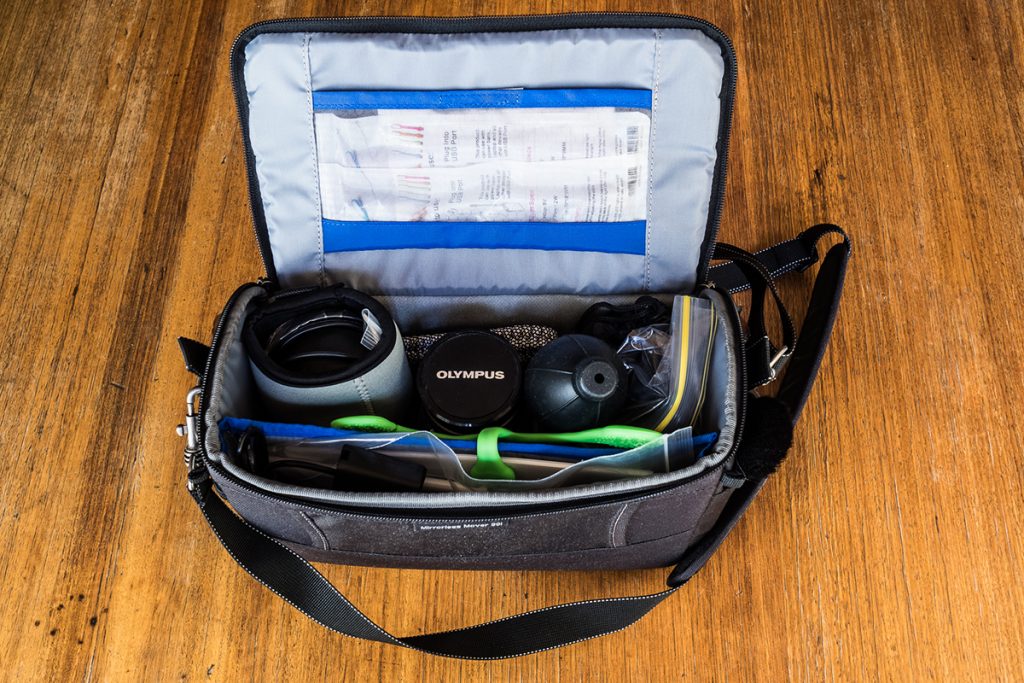
My Think Tank Mirrorless Mover 30i is full to the brim with an almost entire kit ready to sling over my shoulder, or pop in the boot/trunk of my car. The only things missing are a tripod (large for car, mini for shoulder) and my current favourite photogenic toys. Please note: I also carry a cleaning cloth, tissues, blower, and a makeup brush to keep the camera, lenses, and toys in good condition. I have not included these items in the photographs below.
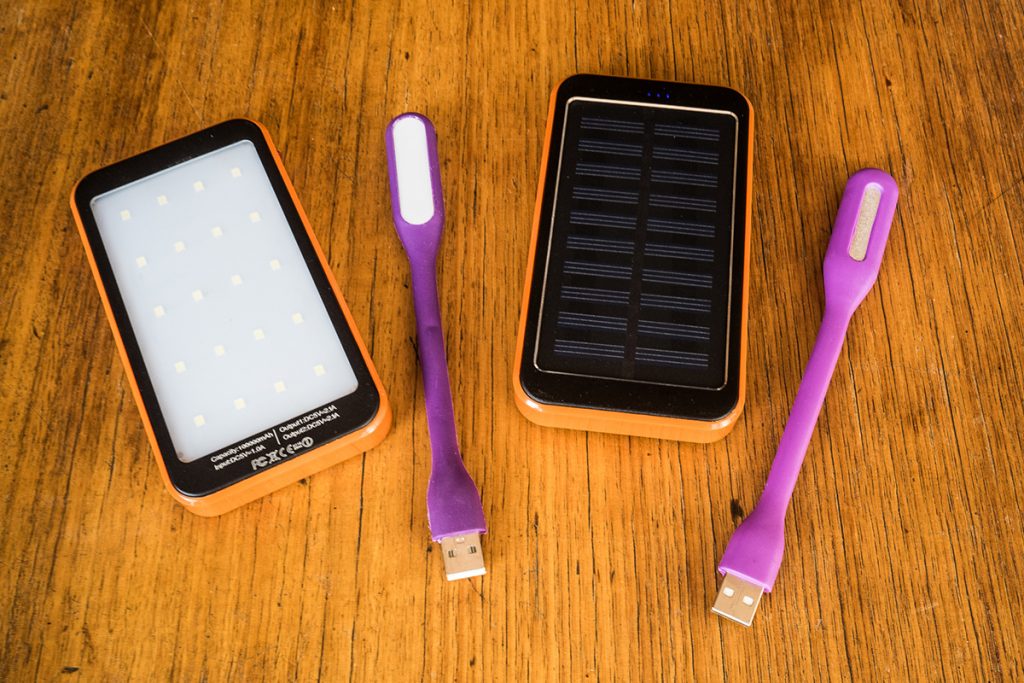
Lights are a must for me and I have two different types that I like to use in my portable kit. The first is actually a pair of solar powered power banks with 20 built in LEDs. Of course the bonus here is the ability to run my camera from one of these, or recharge my smartphone. The second is a pair of flexible neck LED lamps that can run in conjunction with the power bank LEDs, or on their own. Both these types allow me to control light even in outside environments; although they do struggle in bright sunlight.
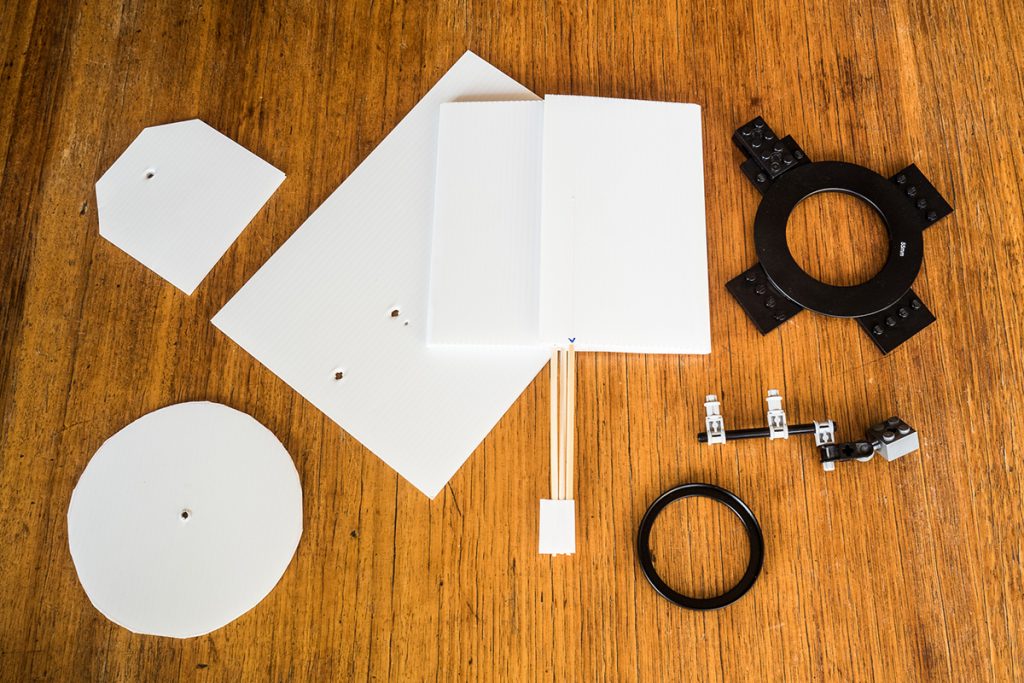
For those bright Aussie full-sun moments I find reflectors a better alternative to LEDs, and I have found that homemade Corflute reflectors are just the ticket. The reflector in the centre unfolds to also act as a wind breaker. The three reflectors on the left attach to the Toy Photographers’ Reflegomaster (right) for ‘on lens’ reflected light, thus allowing you to keep both hands on the camera. As I use manual focus lenses, I find this very handy. If you would like more details on the Reflegomaster join us on the Google+ site for instructions on how to make your own. My Reflegomaster has a 55mm filter thread, so I have a step-up ring for my 49mm filter threaded lenses (bottom right).
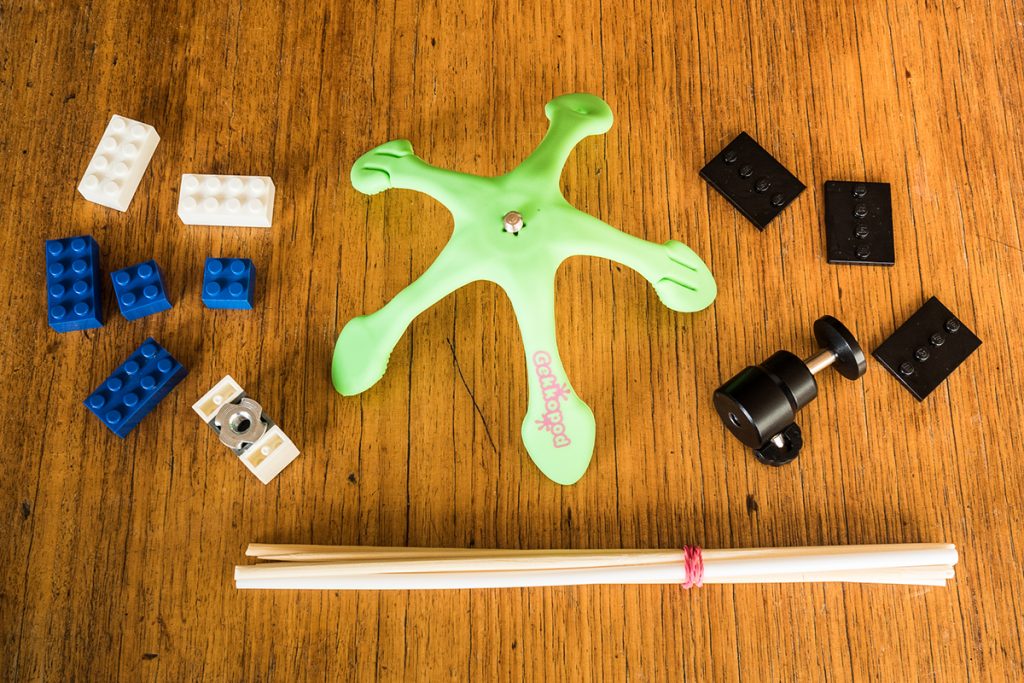
I always carry a Geckopod and small ball head with me, just in case I need a little more stability. Like the Joby GorrillaPod this handy little stand can attach itself to small poles and tree branches; as well as even, or slightly uneven surfaces. I keep a few Lego minifigure stands with me, just in case I cannot get a little person to stand on their own. To the left I have handful of, what I call ‘mongrel blocks’ (non-Lego) to help raise or stabilise characters or vehicles. I don’t use Lego as I don’t want to lose it. Also, the assembly at the bottom has been doctored to fit a ¼” furniture nut that accepts the screw thread of the ball head. It has been Kragle-d together with super glue; something I would not do to Lego bricks. A few appropriately sized wooden skewers, rigid plastic tubes, and fold back clips (not shown) are a boon to hold things down/across/up/wherever.
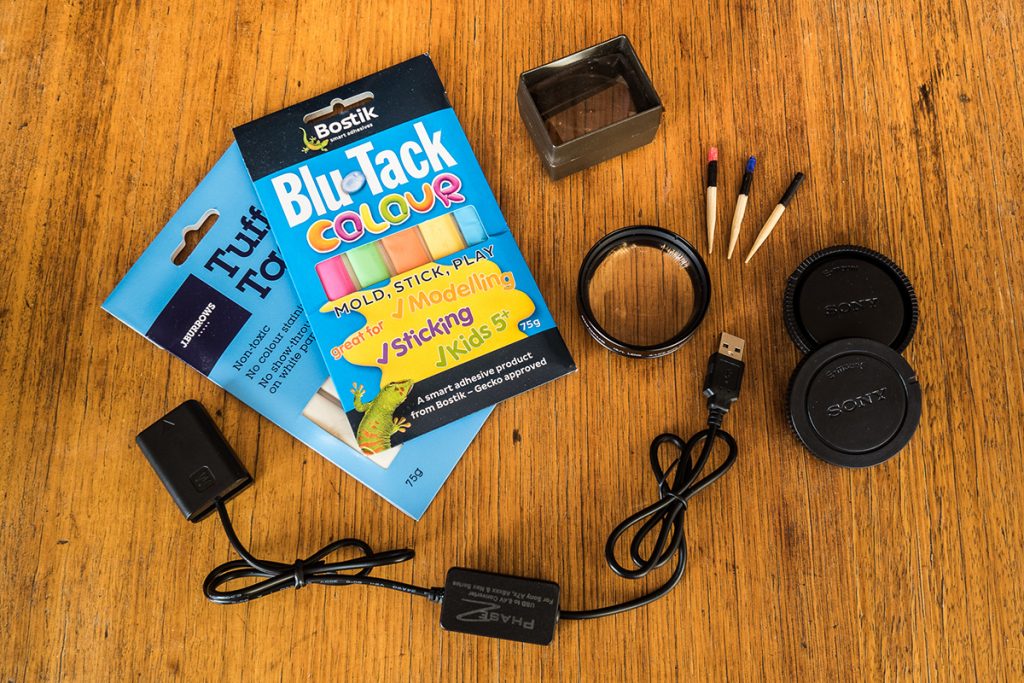
To finish off the complement of non-camera/lens accessories is a comfortable amount of Blu-Tack (or adhesive putty) I normally carry small amounts in plastic containers. The three stakes to the right can be used on small vampires, but they generally work best to help hold single Lego minifigure legs in sand and dirt. A battery adapter (to be used with a power bank) hooded magnifier (from an old slide viewer) and spare lens/body caps are on hand just in case. An achromatic close-up lens from and old film camera (centre right) will allow macro photography up to 1:1. To be honest, I have never used it for toy photography, but I sometimes encounter interesting bugs when down that low, and I like to snap them too. This lens is perfect for the task and saves me from bringing, and changing to, a macro lens.
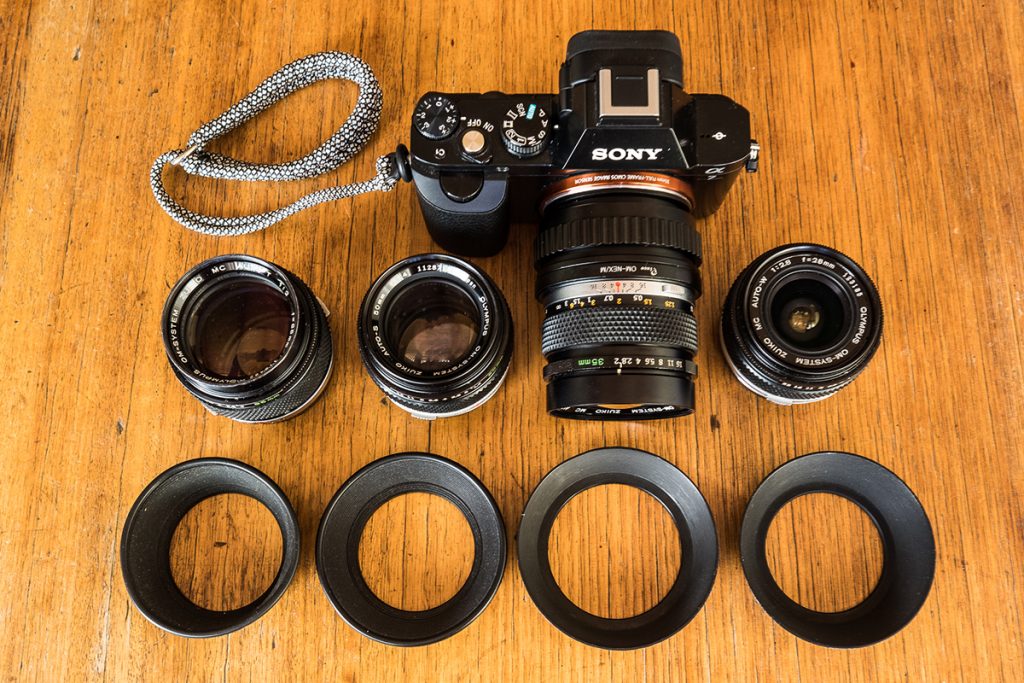
This now brings me to the heart of the kit: the camera and lenses. I have a Sony A7 full frame sensor camera and four Olympus Zuiko, OM mount, manual film lenses. Having a Sony full frame sensor allows me to use these lenses without a crop factor. Mirrorless cameras of all types can be used, but I prefer to use these lenses at the field of view they were intended. All four lenses are attached to the camera body by a Pixco OM-NEX/M helicoid adapter. The benefit of this type of adapter (and the Pixco is the only one I have found) is that it telescopes into a flexible extension tube, but still allows for infinity focussing when fully retracted. Beware: it is possible to introduce dust onto your sensor with with something like this adapter, as it changes the air pressure between the lens and sensor as you wind it in, and out. The hoods below the lenses help control lens flare. It should be noted that the Olympus OM bayonet mount and flange distance will also allow you to attach these lenses, via an adapter, to Canon DSLRs. However, I have no experience with this combination and cannot comment further.
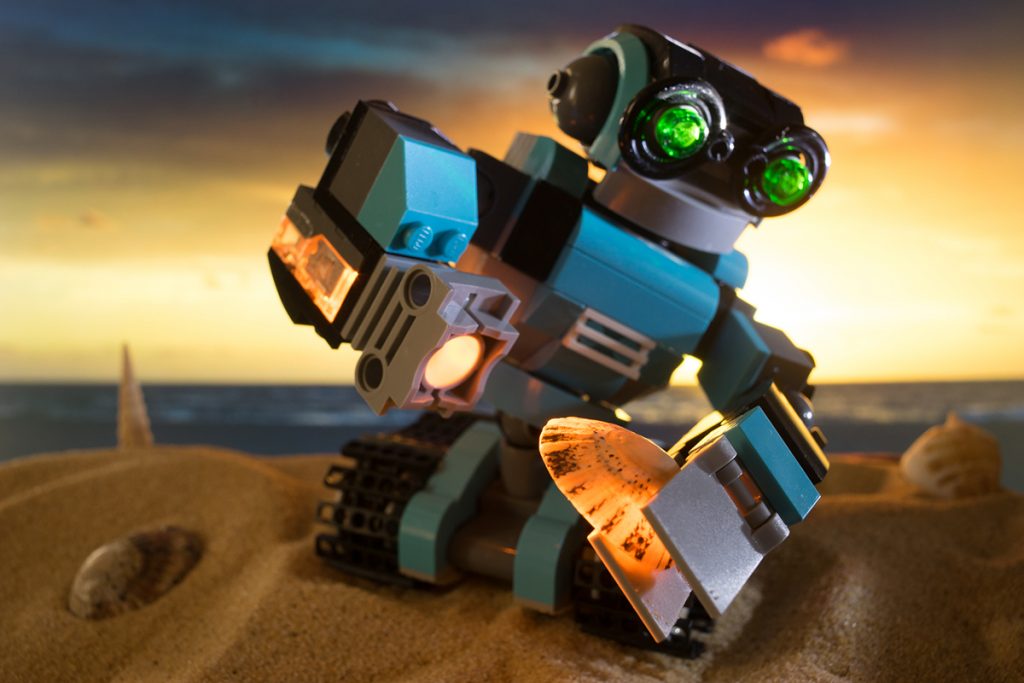
The Zuiko 28mm f2.8 allows me to shoot larger figures, or sets, but still maintain an expansive background to allow the whole scene to tell the story. The more forgiving depth of field also helps. There are two other options in the OM range at this focal length; an f2.0, which is rather expensive; and an f3.5. I feel the f28 is the best compromise between image quality and price.
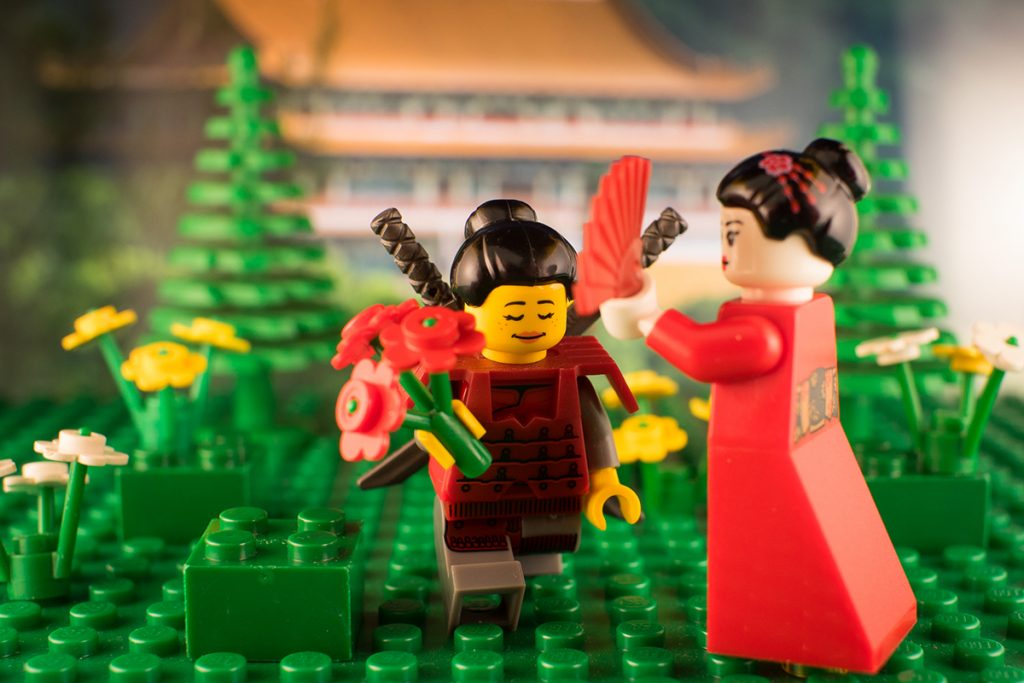
I find the Zuiko 35mm f2.0 to be my ‘go to’ lens and it is on the camera while in the bag, to allow me the greatest flexibility in the fastest set-up time. The Zuiko 35mm f2.8 is a cheaper and lighter option. It also matches the 49mm filter thread of the other three lenses. As it is for general photography, this is one of the best focal lengths I have found for toy photography and the close focus distance of 30cm (12”) saves me from extending the helicoid adapter in many cases.
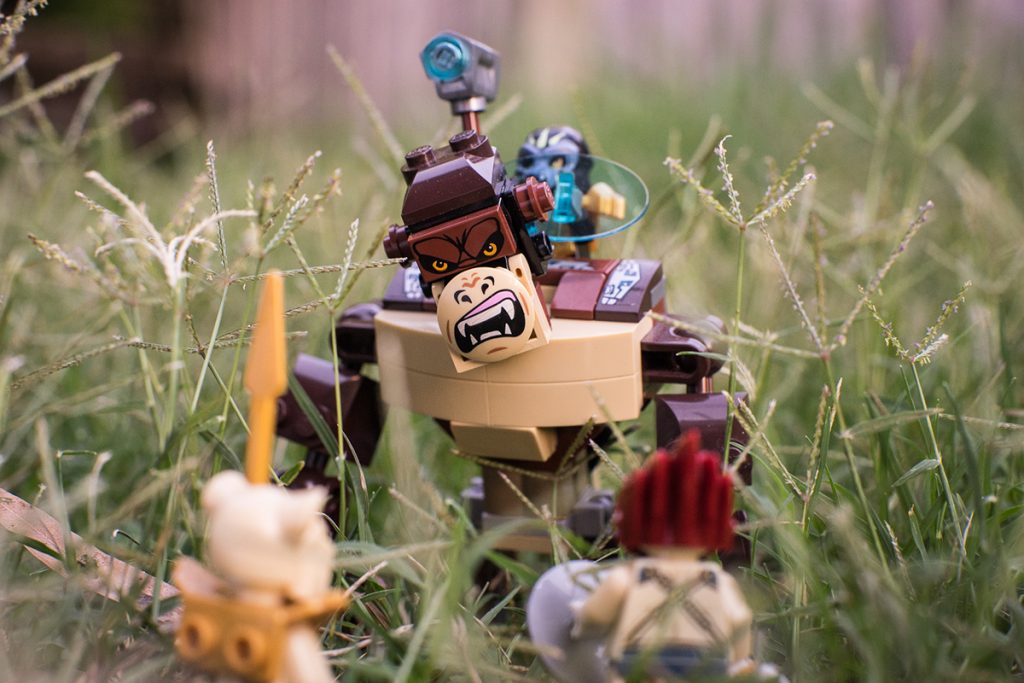
It would be hard not to include a nifty-fifty. The Zuiko 50mm f1.4 is my favourite film lens, and it is almost as flexible as the 35mm focal length for toy photography. I find it works best for outdoor shots where I have more room to move. At f1.4 it gives razor-thin depth of field to allow subject to background separation. In the OM range there is also the options of an f1.2, f1.8, 55mm f1.2, and two macro / general purpose 50mm macro lenses.
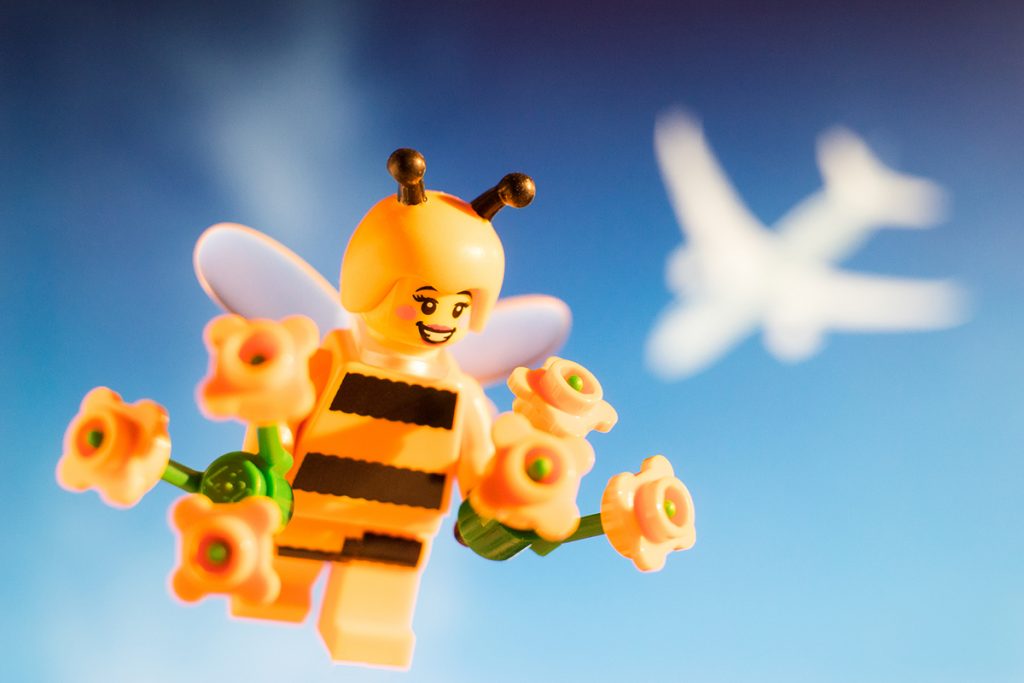
The Zuiko 85mm f2.0 is an outstanding portrait lens for both real life subjects and toys. The bokeh is lovely and it provides good separation from subject to background up to f4.0, even with larger figures such as teddy bears. It works very well for single toys 5-10cm (2-4”) tall, but only with the helicoid adapter in the extended position. The poor minimum focus distance of 0.85cm (2.8’) is otherwise limiting. A close-up lens or filter will also help, but will decrease image quality. If you are shooting with plenty of space to play with, then this will work very well for larger figures as the working distance means you have less worry of your shadow getting in the way of your image.
I have a love for the old manual film lenses, especially Zuiko, as there is a less clinical feel to the photographs as those from modern lenses. This makes it easy to produce dreamy and ethereal looking images that are pleasing to the eye and help the photographer stand out from the crowd. If you don’t mind manually focussing and changing apertures then they may be for you. Although I find the Sony A7 more than competent for toy photography, I see it only as a platform for my collection of Zuiko lenses, allowing me to find my own style with a bit of vintage panache.
Tony
You can follow Tony on G+ or on IG.
If you enjoy posts like this, we invite you to join our G+ community.
Don’t forget to subscribe to the blog to get notified when we have a new post ready for you.


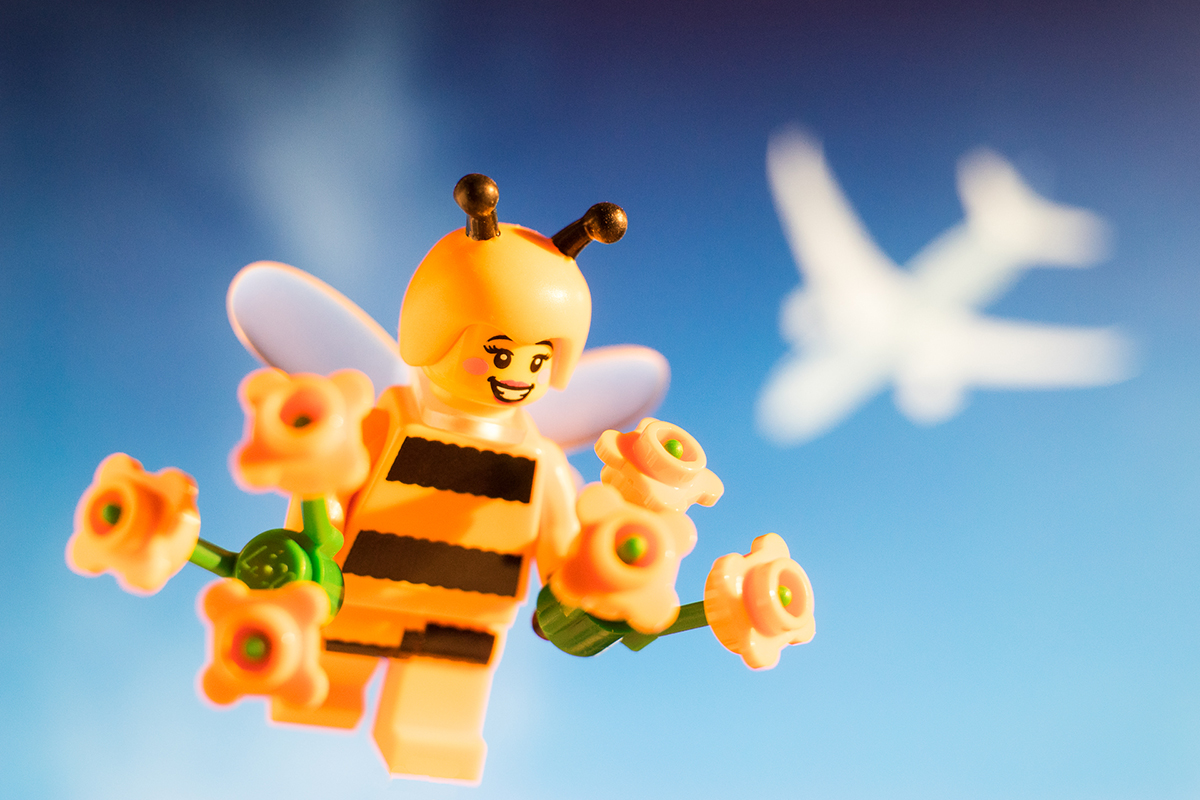
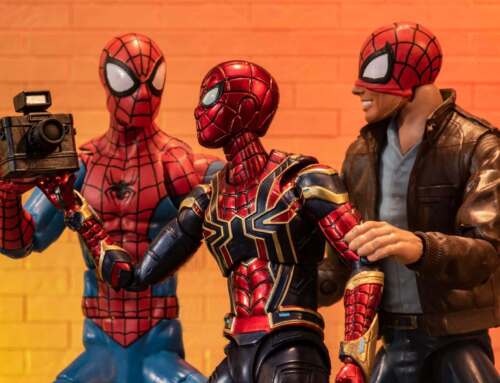
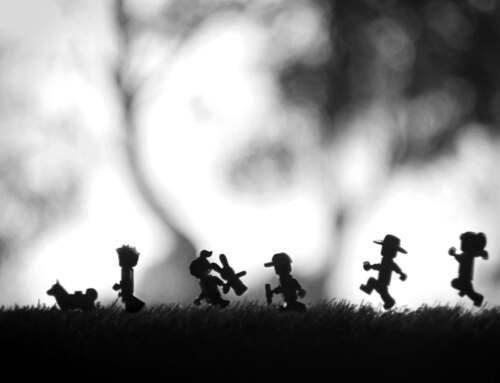
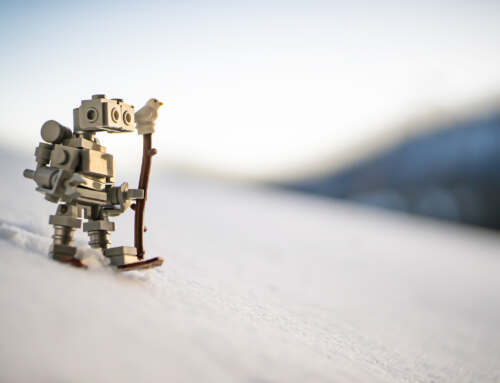
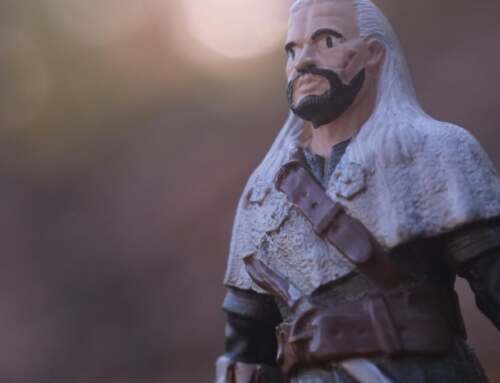
A very interesting read Tony. I use a Lumix and a Canon Powershot for my Lego photography, mainly because of their size and ease of getting them down to minifigure eyelevel, but I would love to shoot with my DSLR’s for the better focus control for more arty pics. I do use them occasionally but it takes a bit of arranging to get them down to the same level. The main trouble with compact cameras, I have unfortunately discovered, is their built in retractable lenses. I damaged my Lumix one day because the camera turned itself off before I had a chance to clean the beach sand off it. Now it doesn’t zoom properly and makes a dreadful noise. It still takes good photos though, but I don’t know for how long and it’s too expensive to repair. I use LED lighting and reflectors for indoors but rely on the ambient light for outdoors, although as I start to venture more into the outdoor jungle I know I’m going to need supplementary lighting and wind breaks. Your setups were quite inspiring. Thank you.
Thanks Ann. Although I have been shooting for years I am a relative newbie at toy photography. I’m sure my setup will change as time goes on, but I am happy with it.
I use weatherproof MFT gear when I’m nervous about the shooting conditions. The Sony A7 and the old Zuiko lenses aren’t up to sand and seaspray.
Fascinating post! I always enjoy reading about what others have in the camera bags (and/or studios). The Reflegomaster looks very interesting! I’ll have to check it out on Google +. Thanks for the information!
Lynn
Thank you Lynn. I hope you have fun if you decide to make the Reflegomaster.
I’m going to steal your “little wooden stakes” idea! I’ve been using LEGO Lightsaber Hilts to secure uncooperative Minifigures to the ground, but I’ve lost too many of them! Buried in dirt, never to be seen again! Plus, being ready for any tiny vampire attacks is an added bonus!
Feel free to steal any idea Brett. I find the thick wooden cooking skewers work best. I cut 5cm (2″) off the pointy end, then shave just a little off the thickness of the cut end to allow the skewer to fit the stud hole of the leg. You will only be able to insert it about 3mm (1/8″) and I colour the end with a texta/marker to match the colour of the legs (to help with post processing cleanup).
Thanks for sharing this Tony. I always love seeing how other photographers work.
Jennifer: it is a pleasure to be able to give something back.
Wow. I mean, WOW! There are so many little treasures in this post, I don’t know where to start! I have to say the Reflegomaster sounds very interesting. I may need to check that out. I’m not going to pretend I understood all you said, like f803 or f0.572 🙂 I do have a rough idea what they mean, but I haven’t been able to control my camere’s manual switches for a time now, something’s wrong with the buttons. So my bag of wonder just has a phone for a camera. And toys, of course, mostly Lego. I enjoyed your insight a lot. I never see myself as a professional photographer so it’s always inspiring to learn what the best keep around!
I’m so glad you got something from the post. I do tend to accumulate ‘things’ so always have a full bag, and something to talk about!
Don’t worry too much about f2.0 etc. For the purpose of this post it was a way of differentiating one lens from another (as Olympus often made 2-3 different models at the same focal length).
Don’t discount the secondhand market if you are looking to replace your faulty camera. There are bargains to be had.
I must say that is one impressive kit you’ve got. Reading this made me realise how little I use myself. My kit literally consists of a Nikon D750 with a 60mm macro attached. Since being back in the game this year, I have not used anything other than these but I also haven’t shot anywhere other than my backyard. Even then, I might only add my 24mm macro to bring in more background for an image. The only other item I’ve used has been my iPhone torch once to bring in some extra light before the sun left completely.
What is your post processing “kit” like?
I’m an excessive kind of a guy Kristy and I have the benefit of a car boot/trunk. Sometimes I run with just an Olympus MFT camera and either the 30mm f3.5 or 60mm f2.8 macro lens; but that would make a boring blog post 😉
I too, have used my smartphone flash/torch as a fill-in.
As far as post processing is concerned, I try to use my Android phone and Snapseed as much as possible. Eventually the images make it to PC hard drive via Lightroom CC.
Wowsers! I love the detailed assortment of awesome ideas in your bag!
I too am a big fan of legacy glass (old lenses). They sure make photography more fun for me.
I usually have the hand-me-down Olympus EM5 which was a huge step up from my EPL-1. I recently acquired a great 135mm Jupiter 37a lens but I have found it quite difficult for toy photography as the distance required for focus is 3+ feet. I have done it though!
I will need to utilize your stakes idea as well as the reflegomaster.
I apologise for my late reply Joseph. Thanks for your comments.
My little ThinkTank bag has no spare room, but is so well designed I have no problem in getting to anything.
I have seen your results from Russian lenses and have been very impressed. Jim and the Helios 44-2 seem to be getting along really well.
I’m glad you like my MacGyver solutions to minifigure placement and lighting.